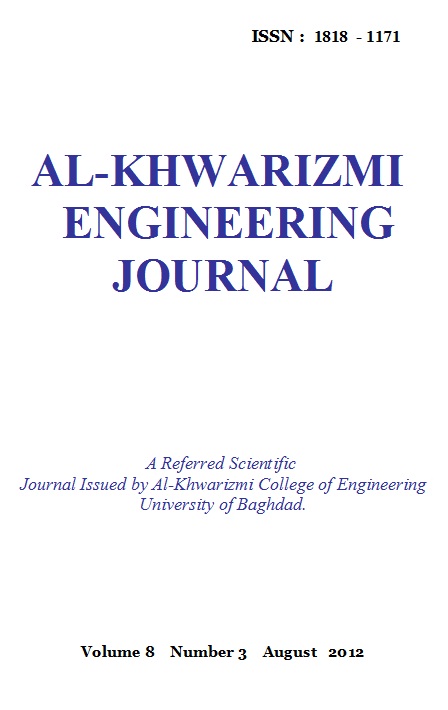Experimental & Theoretical Analysis of Composite (Polyester & Silicon-Carbide) Cantilever Beam
Keywords:
composite beam, FEM, polyester, Silicon-CarbideAbstract
A cantilever beam is made from composite material which is consist of (matrix: polyester) and (particles: Silicon-Carbide) with different volume fraction of particles. A force is applied at the free end of beam with different values. The experimental maximum deflection of beam which occurs at the point of the applied load is recorded. The deflection and slope of beam are analyzed by using FEM modeling. MATLAB paltform is built to assemble the equations, vector and matrix of FEM and solving the unknown variables (deflection and slope) at each node. Also ANSYS platform is used to modeling beam in finite element and solve the problem. The numerical methods are used to compare the results with the theoretical and experimental data. A good agreement is observed between the above methods. The Increase in volume fraction of particles results in increasing the modulus of elasticity and decreasing the deflection of beam. An equation is suggested for modulus of elasticity as functions of volume fraction.
Downloads
Downloads
Published
Issue
Section
License
Copyright: Open Access authors retain the copyrights of their papers, and all open access articles are distributed under the terms of the Creative Commons Attribution License, which permits unrestricted use, distribution, and reproduction in any medium, provided that the original work is properly cited. The use of general descriptive names, trade names, trademarks, and so forth in this publication, even if not specifically identified, does not imply that these names are not protected by the relevant laws and regulations. While the advice and information in this journal are believed to be true and accurate on the date of its going to press, neither the authors, the editors, nor the publisher can accept any legal responsibility for any errors or omissions that may be made. The publisher makes no warranty, express or implied, with respect to the material contained herein.












